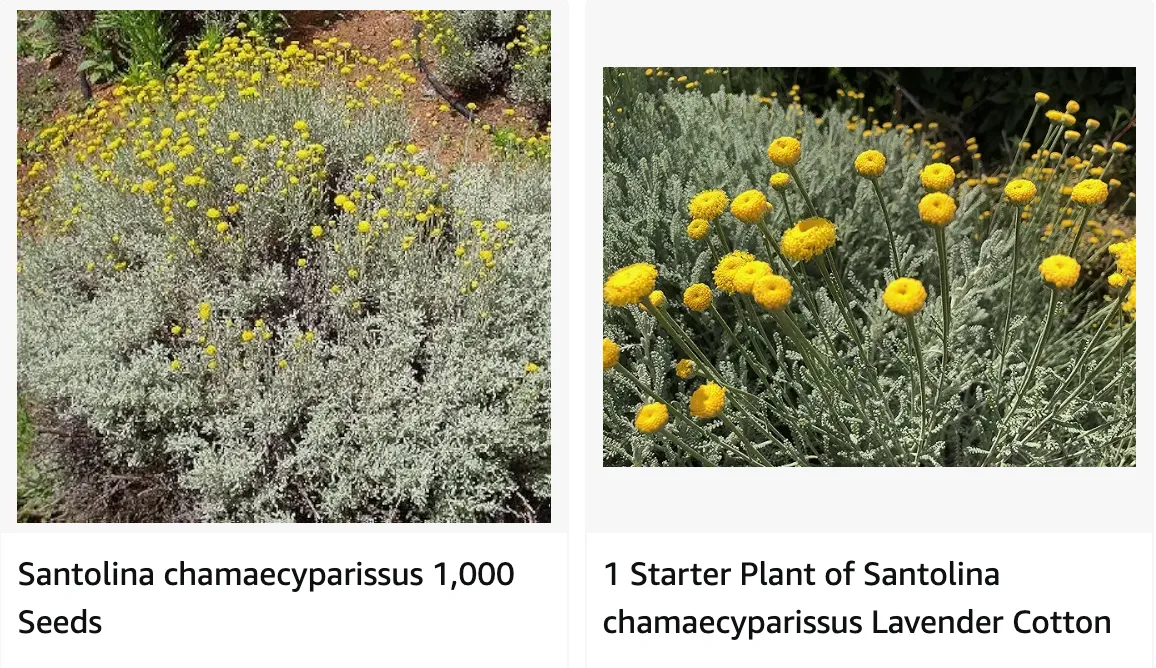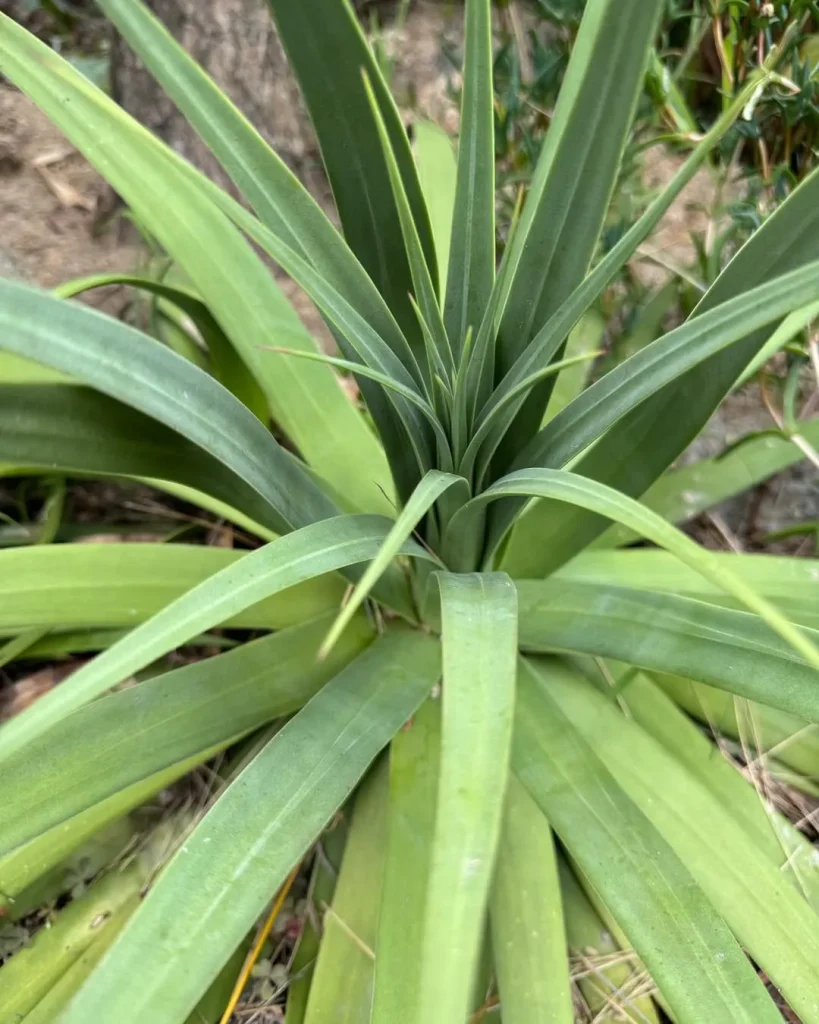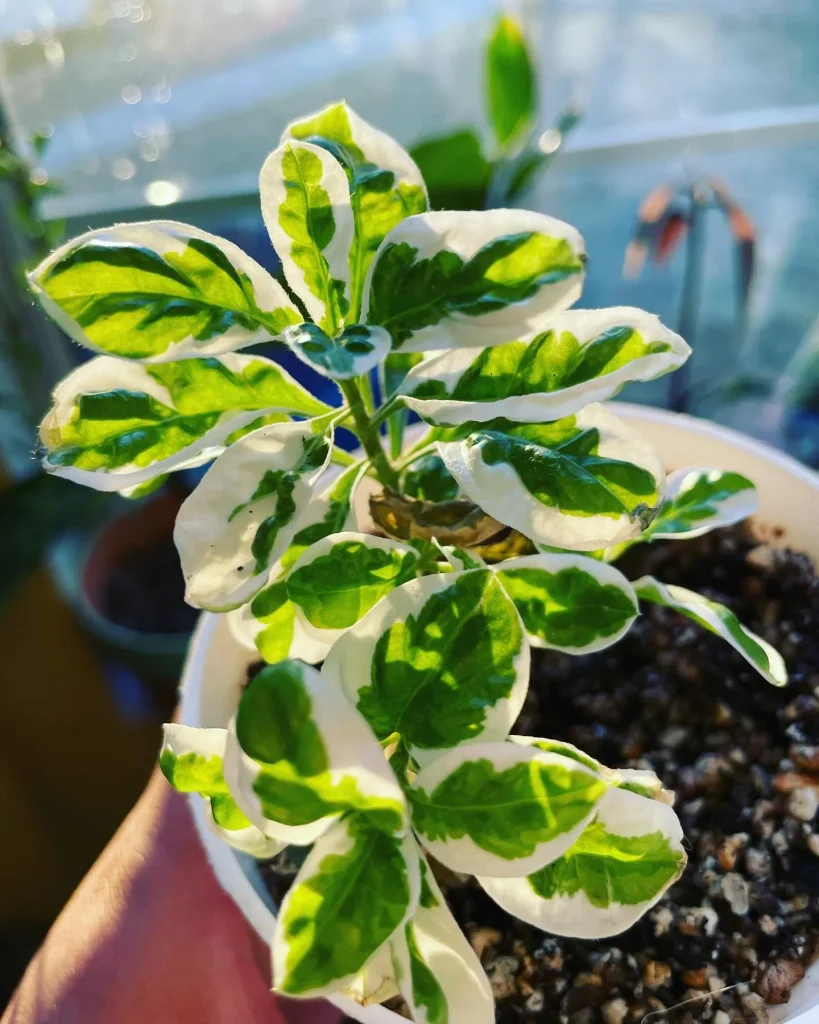
A Gardener’s Guide to Santolina chamaecyparissus: The Silver Sensation
For years, I’ve been captivated by the beauty of low-maintenance plants. That’s how I stumbled upon Santolina chamaecyparissus, a captivating little shrub with a name that rolls off the tongue like a pebbled beach. Since then, I’ve become completely enamored with its soft, silver foliage and sunny disposition.
Here, I want to share what I’ve learned about this little charmer, hoping it’ll inspire you to add a touch of the Mediterranean to your own garden.
27 Species in Genus Santolina
What Does Santolina chamaecyparissus Look Like?
Imagine a cloud of shimmering silver, dotted with cheerful yellow buttons. That’s Santolina chamaecyparissus in all its glory. Standing no taller than two feet, this evergreen shrub boasts feathery, grey-green leaves that release a delightful, musky fragrance when brushed against. In summer, the foliage is punctuated by clusters of tiny, button-like flowers in a bright, sunny yellow. While the flowers themselves aren’t particularly showy, they add a delightful pop of color and attract a symphony of pollinators.
Where are Santolina chamaecyparissus Located?
Think sun-drenched hillsides and rocky coastlines bathed in warm Mediterranean sunshine. That’s the natural habitat of Santolina chamaecyparissus. Hailing from the western and central regions of the Mediterranean, this little shrub thrives in hot, dry conditions. It’s perfectly adapted to withstand periods of drought, making it a fantastic choice for water-wise gardens.
Can I Prune Santolina chamaecyparissus?
Absolutely! Santolina chamaecyparissus responds well to pruning, and a light trim every year or two can help maintain its compact shape and encourage bushier growth. The best time to prune is just after flowering in late summer. Simply use sharp shears to remove any leggy stems or trim back overgrown areas. Don’t be afraid to be a little bold – Santolina chamaecyparissus is quite forgiving and will bounce back quickly.
What Eats Santolina chamaecyparissus?
Generally, Santolina chamaecyparissus is a pretty pest-resistant plant. However, there are a few occasional nibblers to keep an eye out for. Deer and rabbits may find the aromatic foliage tempting, especially during the colder months when other food sources are scarce. If you live in an area with these herbivores, planting Santolina chamaecyparissus in a location where they can’t easily access it is best.
What Pollinates Santolina chamaecyparissus?
Santolina chamaecyparissus’ bright yellow flowers are a beacon for a variety of pollinators. Bees, butterflies, and even hoverflies are frequent visitors, drawn to the nectar-rich blooms. These tiny creatures play a vital role in ensuring the plant reproduces and contributes to the overall health of the ecosystem.
Is Santolina chamaecyparissus aka Curry Plant?
This is a common misconception. While Santolina chamaecyparissus does have a pleasant, aromatic fragrance, it’s not related to the curry plant (Helichrysum italicum). The curry plant has silvery-green leaves, but they have a distinct curry-like scent and are used in some cuisines. Santolina chamaecyparissus, on the other hand, is not considered edible.
What to Plant with Santolina chamaecyparissus
Due to its low-maintenance nature and silver foliage, Santolina chamaecyparissus is a fantastic addition to a variety of garden styles. Here are a few ideas for companion plants:
- Lavender: The combination of silver and purple creates a stunning visual contrast, and both plants thrive in similar conditions.
- Catmint (Nepeta): The soft blue flowers of catmint complement the silver foliage beautifully, and both plants attract pollinators.
- Rosemary: Another sun-loving Mediterranean herb, rosemary adds a touch of green and a delightful fragrance to the mix.
- Drought-resistant ornamental grasses: Feathery grasses like Stipa tenuissima (Mexican feather grass) add a touch of movement and texture.
With its easy-going nature, captivating looks, and ability to attract beneficial insects, Santolina chamaecyparissus is a true garden gem. So, if you’re looking for a low-maintenance plant that adds a touch of the Mediterranean to your garden, look no further than this little silver sensation.
If i die, water my plants!



